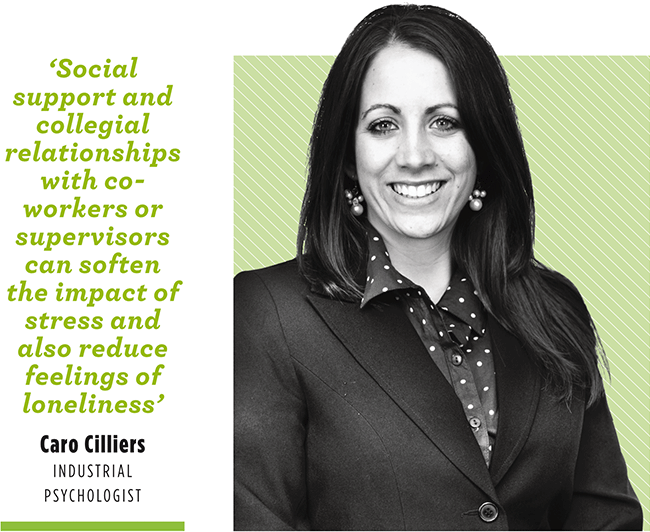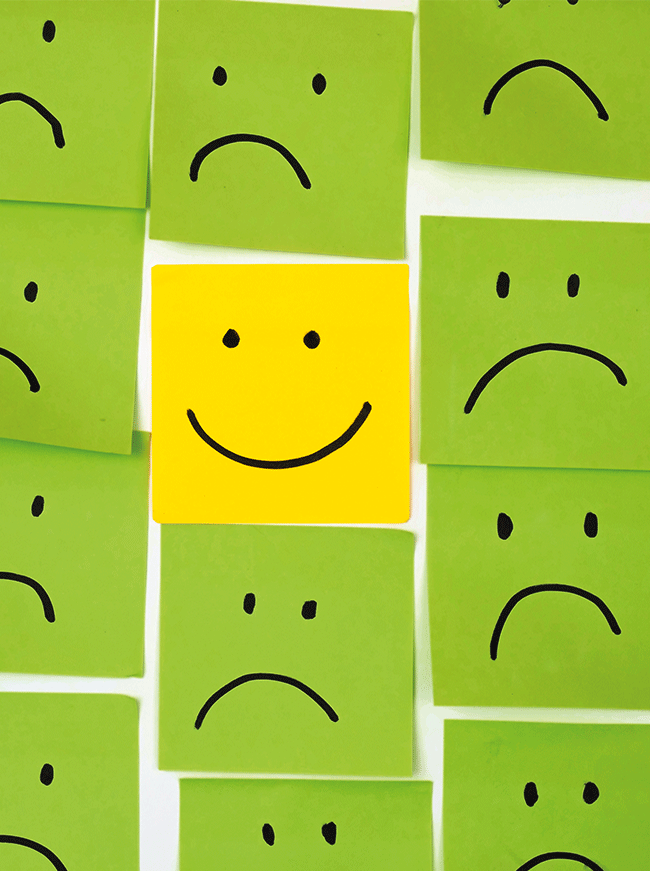Sitting at home computers in sweatpants and neat Zoom-friendly tops, today’s workforce is beavering away harder than ever in an effort to hang on to jobs in the COVID-19 economic crunch. Working from home (WFH) has been gaining traction since the 1980s as technology advanced, but it took the coronavirus pandemic to take it mainstream in what’s been dubbed one of the biggest flexible work experiments in history.
According to a survey by recruitment agency Michael Page, before the crisis just 26% of respondents in SA ‘had the freedom’ to work from home – growing dramatically to 79% during lockdown, when the only people not working remotely were those without a job or with one that didn’t allow it (such as in a warehouse or store).
The upshot is that the effects of WFH have as yet been relatively little researched. But employers’ biggest concern pre-lockdown – that it would encourage slacking – have been disproved by the few studies done. In one of the most interesting, done in 2013 at a 16 000-employee Chinese travel agency, Stanford professor Nicholas Bloom found that WFH increased worker productivity.
What’s more, it reduced employee attrition, sick days and time off, saving companies money by decreasing the need for office space, while saving staff commuting time, petrol money and the pressures of getting to work on time. There was only one problem. At the end of the study, more than 50% of participants said they would choose not to work at home 100% of the time. The reason they gave? Feeling lonely.
It seems that however productive workers may be, loneliness and isolation can cause emotional problems, including anxiety and depression, and potentially contribute to physical issues related to stress, including panic attacks, inability to sleep, loss of appetite and chest pains. A Eurofound/International Labour Organisation research report notes that 41% of remote employees said they experienced higher stress levels, against 25% working in the office.
‘Employees can experience stress due to personal factors – family issues, reduced income, longing for socialisation, health fears; organisational factors – changed roles, duties and expectations; and environmental factors –economic uncertainty, technological changes, which have all been heightened during lockdown working from home,’ says industrial psychologist Caro Cilliers. ‘It’s undeniable that social support and collegial relationships with co-workers or supervisors can soften the impact of stress and also reduce feelings of loneliness; of coping with stressors alone.’
Robyn Sandy, an industrial psychologist, corporate change specialist and MD of Interchange International (South Africa), adds that humans are social beings. ‘Although personality preferences influence the quality and quantity of these interactions, we all need some personal, face-to-face contact,’ she says.

‘Virtual interactions just do not achieve the same result. This may be due to the fact that feedback is more difficult to assess. Words, tone and body language make up a message and these subtle cues are hard to read electronically.’
Odwa Mazwai, clinical and operations executive of Sizwe Medical Fund, speaks to this. ‘I run a small, high-functioning team that interacts frequently. These interactions involve a complex interplay of structured and free thinking, strategising to execution. They held subtle cues read in real-time encounters that we lost in electronic communication. Despite connecting more frequently in virtual meetings than we’d done in person, my team and I found ourselves feeling more disconnected – and lonelier – under WFH conditions than we’d have imagined.’
It’s clearly important for employers to keep in mind that when people work from home, they can get surprisingly lonely – and to take steps to counter that before it becomes a problem. ‘Loneliness is the last thing on employers’ minds right now,’ says Sandy. ‘They are so preoccupied with the survival of their business and worrying about trusting their employees, who’ve had a much higher level of independence and freedom. As such, employers have “overdone” the electronic contact. One CEO said to me recently, “I’ve never communicated more with my people”.’
A survey by the South African College of Applied Psychology and the South African Depression and Anxiety Group (SADAG), found poor awareness among both employees and managers of the symptoms of depression, including trouble concentrating, forgetfulness and indecisiveness – and of its cost to companies. It found half of employees diagnosed with depression had taken time off because of it (on average 18 days a year); 54% said they took longer to complete simple jobs; and 50% made more mistakes than usual at work.
‘I think generally in society there’s a lack of awareness of depression,’ says Sandy. ‘These symptoms are very common yet seldom associated with depression. The cost to society and business is very high but, sadly, not measured.’
It’s vital to examine how depression is managed in the workplace, and what procedures can be put in place to ensure that affected employees are encouraged and supported in seeking treatment, says SADAG operations director Cassey Chambers. This has become particularly important with the pressures of the pandemic and its economic repercussions. ‘SADAG has noted a rise in loneliness, depression, harmful substance use and suicidal behaviour.’
The challenge, of course, is affordability. ‘Businesses have been severely cut,’ says Sandy. ‘Where are the money and resources going to come from in these tough economic times?’ But just raising awareness can help. With WFH, employers can add to workers’ stress in ways they may not realise.
For example, researchers at the UK’s Cranfield University found that ‘employees respond to the ability to work flexibly by making extra effort […] to return benefit to their employer’, but often employers increase the workload with requests that can’t be achieved in certain time frames.
This can lead to burnout, which is harder to diagnose when employers can’t see changes in a worker’s personality on a daily basis. And, in 2017, psychologist Julianne Holt-Lunstad told the Annual Convention of the American Psychological Association, that ‘there is robust evidence that social isolation and loneliness significantly increase risk for premature mortality, and the magnitude of the risk exceeds that of many leading health indicators’.
SADAG has issued suggestions of ways companies can help employees who WFH
to combat loneliness. Key is educating them on depression and, especially, how cognitive symptoms can affect work performance. ‘This is all-new territory for most managers, who are under huge pressure themselves,’ says Sandy.

Companies should also raise awareness of any existing employee-assistance programmes and emphasise that these can help with mental-health problems such as depression; promote a culture of acceptance around depression and other psychiatric disorders (‘they are no different to diabetes or asthma’, says Chambers); and explore creative ways to support their recovery, such as flexible working hours.
‘If they share their struggles with depression, refer them to a mental-healthcare professional or counsellor and reassure them the illness can be treated,’ says SADAG. Cilliers adds that organisations should implement workplace interventions, ‘such as managing supportive relationships by suggesting a buddy-system or mentorship’.
The bottom line is that we need general guidelines for WFH. ‘It’s a huge change,’ says Sandy. ‘There are many new rules that need to be put in place to achieve a win-win outcome with WFH. The guidelines need to go beyond burnout and loneliness.’
Yet addressing these two is a good place to start – for instance, encouraging workers to switch off after hours (rather than expecting them to be permanently ‘on’, answering emails or chats 24/7.), and countering loneliness by not only finding regular ways to meet up virtually but, with eased lockdown, finding ways to gather weekly in person if possible, else monthly or quarterly.
A Gallup poll shows that remote workers who come in to work at least once a week are happiest – they’re more likely to say they have a best friend at work, and that their job has opportunities to learn and grow. Employers, in turn, benefit. Gallup found that ‘highly engaged workplaces’ claim 41% lower absenteeism, 40% fewer quality defects and 21% higher profitability.
‘You can’t do without face-to-face interactions. The challenge is to find the balance between virtual and in-person contact. For each person, business and industry there will be a “sweet spot”,’ says Sandy. ‘This new style of working is a massive change and they need to adjust to this new normal. There are many negative emotions experienced while journeying through the cycle of change. Developing change resilience will go a long way in helping people cope with WFH.’
All of this will be an investment in the future, as WFH appears set to continue post-pandemic. Labour analyst Terry Bell is one of many who say so, adding that the benefits are significant – not just for employers but for the planet, as there will be fewer cars on the road and less pollution. Alexander Forbes’ head of strategic clients, Lesiba Mothata, confirms that working remotely is likely to become a more permanent feature in various industries.
And Facebook says that by 2030, half of its staff will work from home – even though Mark Zuckerberg told the Wall Street Journal that only one in five was currently keen to do so. More than half ‘really want to get back to the office as soon as possible’, he said.
It will be up to employers to help change that, by improving the WFH experience.
If you find yourself on the hunt for a new job be sure to check out Recruitment Agencies in Johannesburg








